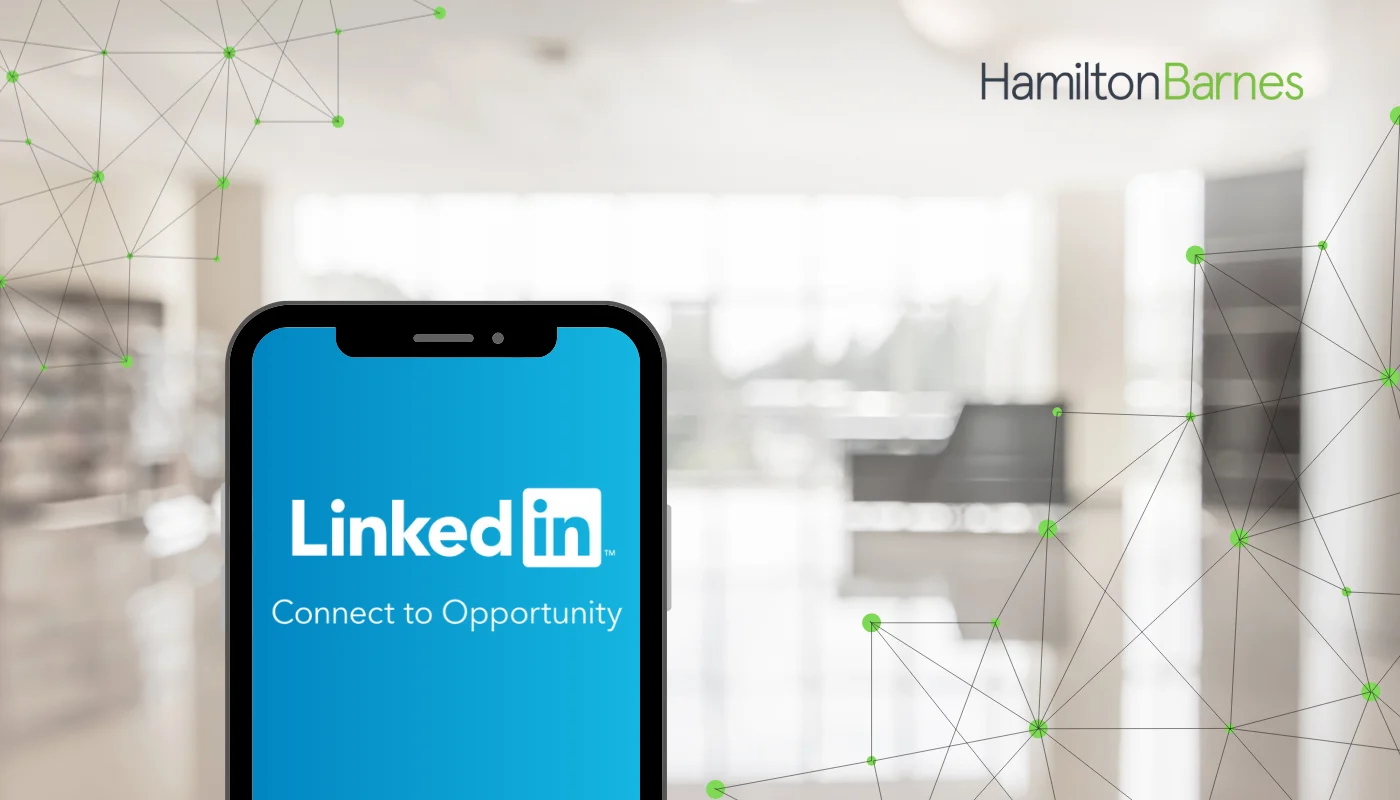Your LinkedIn Can Get You Hired - Here’s How
05 Nov, 20257 minutes
Your LinkedIn Can Get You Hired - Here’s How
Whether you’re studying Network Engineering, Cyber Security, or another technical subject, building skills is just the first step. The next challenge is getting noticed by the right people in the industry and turning your knowledge into real career opportunities.
Your CV is strong and your skills are solid. But if your LinkedIn profile isn’t working for you, you could miss out on opportunities before you even apply. The good news? LinkedIn is a tool you can use to get noticed, connect with professionals, and even be approached by recruiters - sometimes before you apply.
Why LinkedIn Matters for Students and Graduates
LinkedIn has grown into the world’s largest professional networking platform. It is especially important for students and new graduates. The platform now has over 1.15 billion users worldwide, up from around 644 million in 2019. That’s more than double in six years. More professionals, more recruiters, and more companies are active on it than ever.
For students and graduates, this growth matters. More users mean more chances to connect, learn, and be discovered. Employers now use LinkedIn as a main source for talent - not just for senior staff but for students, graduates, and early-career professionals.
An optimised profile can lead to recruiters approaching you directly. This is huge if you’re still studying or just graduated. Instead of waiting to apply, companies might reach out because your skills, projects, and certifications stand out. LinkedIn can actively bring opportunities to you - helping you cut through a competitive graduate job market.
LinkedIn is also a great place to learn. Following companies, industry experts, and professional groups helps you see trends, discover in-demand technologies, and learn what skills recruiters want. Engaging with content shows recruiters you are interested, proactive, and motivated.
Make Your Profile Stand Out
Your photo and headline are the first things a recruiter sees. A clear, professional photo that feels approachable helps.
Your headline isn’t just your course title. Instead of “Student” or “Graduate”, try:
“Network Engineering Student | CCNA in Progress | Passionate About Cybersecurity and Cloud Networks”
This tells recruiters who you are, what you’re learning, and where your interests lie.
Your About section is your story. Don’t just list skills. Explain what excites you, what projects you’ve done, and what you hope to achieve. Keep it concise. For example:
"I’m a final-year Network Engineering student with hands-on experience building secure networks in labs and personal projects. I’m passionate about tackling real-world networking challenges and expanding my skills in cloud and enterprise environments."
Keywords and Technologies
A key way to get noticed is through keywords. Recruiters often search using technologies or tools like CCNA, Python, VLAN, AWS, Cisco, or firewall configurations. Add these keywords naturally in your headline, About section, experience, and projects.
Think of LinkedIn as a search engine for talent. If your profile includes the terms recruiters look for, your chances of being found increase. Highlight the technologies you’re confident in, and include certifications, labs, or relevant university projects. This shows recruiters you have practical skills they need.
Highlight Skills, Projects, and Certifications
Even without full-time work experience, your achievements matter. Include certifications like CCNA, CompTIA, or AWS, even if in progress. University projects, lab work, or personal technical projects make your profile stand out.
For example, you could describe a project where you built a simulated VLAN network and improved packet efficiency. Include the technologies used and outcomes. This shows recruiters that you can apply your knowledge in real-world situations, not just learn theory.
Show Experience - Even Without a Job
No internships yet? That’s fine. Include university projects, volunteering, hackathons, or competitions. Focus on what you did, the technologies you used, and the skills or results you achieved. Even small projects show initiative, problem-solving, and teamwork.
Be Active and Engage
LinkedIn isn’t just a static profile. Being active, posting updates, commenting, and joining groups increases visibility and shows recruiters you are serious about your career.
Join groups like the Empowering Future Network Engineers group to connect with peers, ask questions, share projects, and learn. Follow the Route to Networking podcast page to get insights from industry leaders and understand career pathways.
Comment thoughtfully or share your learning journey. This shows that you’re part of a wider professional community - not just a student learning alone.
Recommendations and Endorsements
Endorsements and recommendations give credibility. Ask professors, mentors, or internship supervisors to vouch for your skills. Even a short note highlighting teamwork, reliability, or problem-solving makes a difference.
Stay Active and Share Your Journey
You don’t need to post daily, but activity helps you get noticed. Share updates on projects, certifications, or learning milestones. Comment on posts by Hamilton Barnes, Cisco Networking Academy, or networking influencers. This shows you’re engaged, learning, and passionate.
Quick Extra Tips
Customise your LinkedIn URL to make it professional. Keep your profile consistent with your CV. Use keywords for networking, security, and telecoms to make it easier for recruiters to find you.
Student-Friendly LinkedIn Checklist
Here’s a step-by-step checklist to optimise your LinkedIn profile:
- 1. Profile Basics - Add a professional photo, write a strong headline, customise your URL, and match your CV.
- 2. About Section - Write an engaging summary, include keywords, and show projects or achievements.
- 3. Experience & Projects - Add university projects, labs, hackathons, or volunteering. Highlight what you did, technologies used, and results.
- 4. Skills & Certifications - Include technical skills and certifications. Ask for endorsements.
- 5. Keywords & Visibility - Use relevant technologies and certifications across your profile.
- 6. Networking & Groups - Connect with classmates, alumni, and professionals. Join the Empowering Future Network Engineers group and follow the Route to Networking podcast. Engage with posts.
- 7. Recommendations & Endorsements - Ask for recommendations that highlight teamwork, problem-solving, and technical skills.
- 8. Activity & Content - Share updates on projects, certifications, and learning. Comment and reflect on industry trends.
- 9. Extra Tips - Keep your profile updated. Use a professional tone. Treat LinkedIn as a living profile that grows with your career.
LinkedIn isn’t just a profile - it’s your digital handshake to the tech world. By following this checklist, using the right keywords, joining groups, and staying active, you can get discovered by recruiters, showcase your skills, and start building a professional network.




